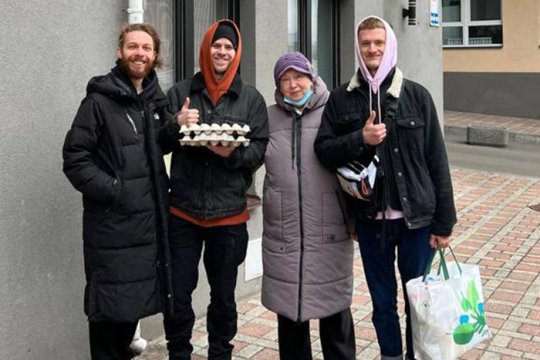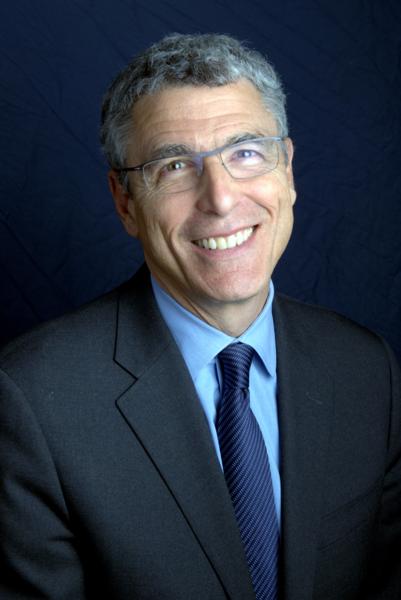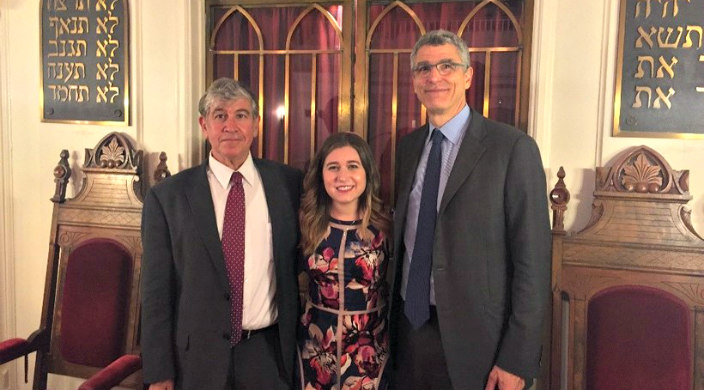
Rev. Dr. Martin Luther King, Jr. said “The ultimate measure of a man is not where he stands in moments of comfort and convenience, but where he stands at times of challenge and controversy.” During the last week, the leaders and community at Congregation Beth Israel in Charlottesville have met Dr. King’s high bar of moral leadership.
I had the privilege to worship and spend time with this extraordinary congregation less than a week after the Shabbat that shook this community – and most of our world – to its core. I brought the love, support, and admiration of the entire Reform Jewish Movement – almost two million strong across North America — and bound with unbreakable solidarity to Charlottesville.
With uncommon wisdom, courage, and love, Rabbis Tom Gutherz and Rachel Schmelkin led this community through a sea of hate and danger as neo-Nazis and white supremacists, guarded by fully armed militias, marched around this historic synagogue spewing anti-Semitic taunts. No one would have balked had the leaders cancelled Shabbat morning prayers last week, but they didn’t; that’s not what this community is about. Rather, they prayed earlier than usual to be able to join the counter protests, faithfully standing up against roving bands of haters. Rabbi Dan Alexander, Congregation Beth Israel’s rabbi emeritus, planted so many seeds of compassion and commitment that have fully flowered during these dark days. The congregation’s president, Alan Zimmerman, helped guide this community through those fear-filled days and then graciously shared his reflections in a blog post that has reached hundreds of thousands of readers. To CBI member Mayor Mike Signer, as well, a debt of gratitude for the steadfast way he led this entire community.
The opening word of this week’s Torah portion is also its name: R’eih. It means “to see.” Everyone in this congregation will long remember what they saw last week: Nazi flags and tiki torches reminiscent of Hitler’s Germany and KKK rallies of years past. Tragically, those indelible images were not from newsreels.
In tractate Berachot 34b of the Babylonian Talmud, we are taught that “one may only pray in a house with windows.” Why? One answer is that even when we need to huddle together for spiritual strength, we must never shut out the sights and sounds of the world beyond our doors. Last week those sights and sounds were both terrifying and impossible to ignore. But windows also make sure that the deepest yearnings of our hearts radiate outward from our prayer place, helping to heal the brokenness throughout the world. Last Shabbat, the historic and beautiful windows of this, the oldest continuously used synagogue in Virginia, painfully connected the loving spiritual world inside to the seething hatred enveloping the surrounding streets.
In this perplexing and fractured world, so many people yearn to be a part of congregations of depth, purpose, kindness, and backbone. Congregation Beth Israel is such a place, a shining beacon of what we can be at our best. Through these days of trauma, this congregation and its members showed the world how our faith can shape who we are as we uphold our tradition’s enduring vision of a just and compassionate world.
Those who marched last weekend hate who we are. They hate that we are Jews. And they hate our Reform Jewish community’s radical inclusivity. A hallmark of our Reform Judaism is our audacious hospitality. Our embrace of LGBTQ individuals, interfaith families, and Jews of color, strengthens us. Those who marched last week hate our diversity; they hate our deep alliances with communities of color fighting for racial justice and civil rights. But our ranks continue to grow and we continue – undeterred – to partner with the Holy One to shape the world as it ought to be.
Our Torah portion helps us to discern moral clarity. “See, this day I set before you blessing and curse…” (Dt 11:26). Sometimes differentiating the blessing from the curse, right from wrong, can be challenging, but not in these opening verses from Parashat R’eih: “When God brings you into the land…you shall pronounce the blessing at Mount Gerizim and the curse at Mount Ebal…” (Dt 11:29). Mt. Gerizim is lush with green while Mt. Ebal is desolate and barren. These mountains are geographic visual aids for blessing and curses, right and wrong. You can’t confuse them; they couldn’t be more different. But somehow the President of the United States is not able to discern hate from love, racism from tolerance, as he repeatedly has articulated a moral equivalence between neo-Nazi white supremacists – spewing bigotry, racism, anti-Semitism, and xenophobia – and those who stood faithfully against them. The moral distinction is as plain as Mt. Gerizim and Mt. Ebal, but, sadly, our president can’t tell them apart.
Nonetheless, presidents can lead with moral clarity. In President Abraham Lincoln’s first inaugural address, he appealed to the “better angels of our nature,” and he built his leadership by urging all to tap into the best qualities we humans can exhibit. That’s what presidential leadership can be.
It’s not just words or symbols that are at issue. White supremacy is embedded in policies such as the voter suppression laws that make it difficult for people of color to vote in too many states, as well as in the many inequities people of color encounter in the criminal justice system. The problem extends far deeper than a rally in Charlottesville, and we will not rest until we become a land in which justice and liberty truly are for all – and there are no exceptions.
Elaborate preparations are underway for Monday’s solar eclipse. But it was last weekend’s moral eclipse in Charlottesville that threatened to block out the most essential light of all. That full moral eclipse never happened because, thankfully, this congregation joined with Charlottesville’s other faith communities and many decent people of conscience, refusing to sit idly by and choosing instead to be present – lovingly and firmly – as up-standers in the face of demonic hate.
Above the holy ark in this jewel of a sanctuary is a quote from Psalms: “By Your Light do we see light.” (Ps 36:9). Our tradition often depicts God with light metaphors, reminding us that our sacred work is to spread the light of God throughout the dark places in this world.
Our Reform Jewish Movement has asked individuals, families, and congregations across North America to take photos of themselves holding candles so that we can flood the internet with #BeTheLightForJustice images. This is one of six tactical actions we are suggesting that not only will help advance constructive solutions, but also represent the interfaith response to the hate and vitriol dividing our nation.
Congregation Beth Israel has been doing more than its share of spreading the light – and it is not alone. Its members are part of something much larger than just this historic gem of a congregation. During this last week, they have been the focus of our Reform Movement and of Jews of all practices and beliefs here in North America, in Israel, and around the world. And of course, the bonds of our interfaith partners – and the congregation’s partners – elevate our ability to stand against the hate.
On the day after the solar eclipse, we will observe Rosh Chodesh Elul, when we will see the sliver of the new moon that signals we are one month from Rosh HaShanah, the new year. Although the light of the moon will barely be visible, it will grow day by day. And so it is with our holy work.
Like our ancestors before us, we must be able to see the stark contrast between Mt. Gerizim and Mt. Ebal, between blessing and curse, between love and hate, between pluralism and racism. May we continue to be inspired by Congregation Beth Israel to turn darkness into light, to turn fear into resolve, to turn xenophobia into acceptance, and to turn hatred into hope.
This piece was adapted from a sermon delivered on Friday, August 18, 2017 at Congregation Beth Israel, Charlottesville, VA. It first appeared on Huffington Post.
Related Posts
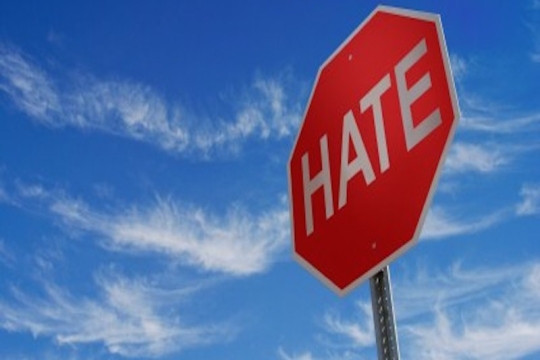
A Letter to the Jewish Community
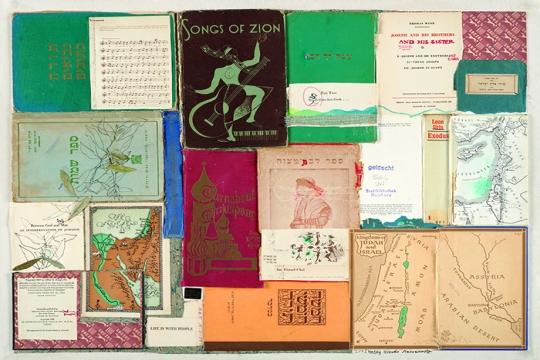
Holy Sparks: Celebrating 50 Years of Women in the Rabbinate
